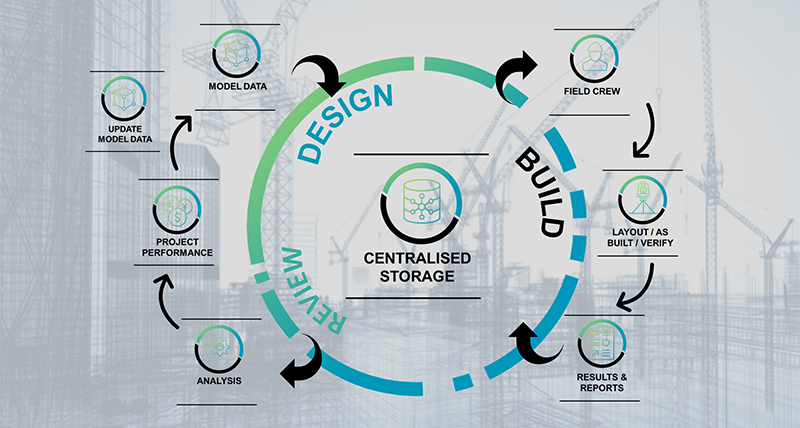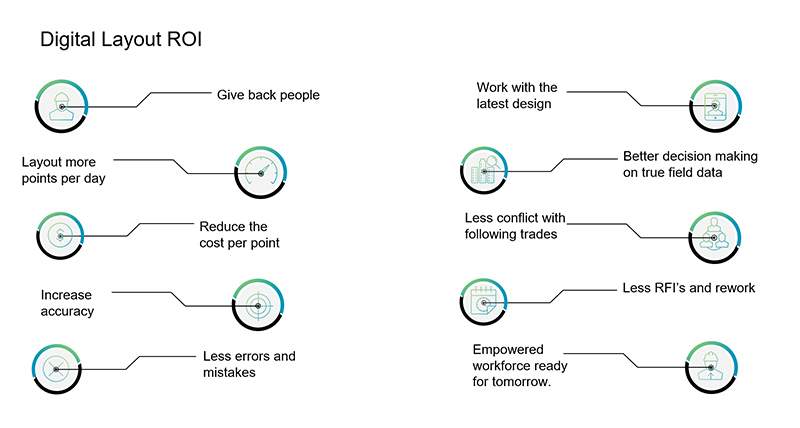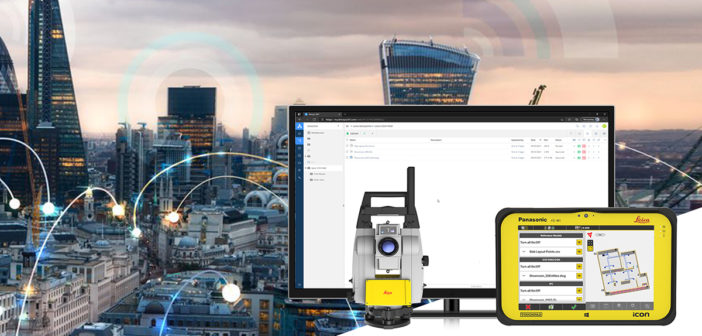Throughout every phase of the construction process, workflows are still not fully digitised, which breaks the data chain and leads to communication issues. Creating, storing, and sharing the data can be tricky with data silos and when the partners involved do not work on the same versions. This is often the case, making sharing the latest revisions and informing your partners more challenging. With a connected and collaborative environment, these issues can be addressed, and the workflows easily improved. Centralised storage and compatible software solutions used by all parties enable construction companies to optimise collaboration, become more efficient and stay on budget.
The importance of the Office-to-Field and Field-to-Office communication
One essential factor for a connected and collaborative construction site is a workflow where everyone can access and work with the latest information. Often this is not the case because the owner, architect and contractors don’t have a fully digitised workflow or don’t work with the same data format. 96% of the data created on a project isn’t used, and over 70% of owners and contractors say they cannot access real-time project data. This shows that the exchange of data between the office and the field crews is lacking during the design, build and review phase.
Every step of the construction process requires data to be transferred so the next trade can continue with the latest revisions. They need to see all the changes made to plans because without that, the risk of overseeing issues rises, and so do the costs to fix them should they not be discovered early enough.
Bricsys 24/7 – Enhancing powerful construction collaboration
A centralised project data and collaboration tool such as Bricsys 24/7 is helpful to bridge the gap between the office and field crews. With it, everyone involved in the project can update their part, so all the involved parties have the necessary information to complete their task.
Improved construction Workflow using Bricsys 24/7

There is a way to improve communication between teams to help increase efficiency to complete the project on time and on budget. An ideal workflow revolves around a centralised storage system where all the involved parties have the necessary access and are updated when changes are made or a new version is available. If the right hardware from the Leica iCON series and compatible software such as Bricsys 24/7 is used, an ideal workflow for construction could look like this:
Design Phase
- After the design model has been completed, it is pushed to the central storage system
Build Phase
- Then, the design model can be accessed by the field crew for layout tasks
- After completing a task, as-built verification can be conducted
- The recorded results and generated reports can be uploaded to the centralised storage
Review Phase
- The new information can be easily analysed
- If necessary, adjustments to the plans can be made
As soon as the review phase is completed, it all starts over with the design phase to determine if and which changes are necessary based on the results gathered during verification. This process with the design-build-review phase is repeated until the entire construction is completed, keeping everyone up to date with the latest available information.
The benefits of a connected and collaborative construction site

Incorporating a connected and collaborative workflow with the iCON build solution can increase your ROI for quicker payback and higher productivity. As the different teams are better connected using Leica iCON build and compatible software solutions that everyone can access, they are always working with the latest revisions at hand. Following trades can adapt to a new situation more easily when they receive a notification of the changes made. This way, issues can be shared with the responsible team and fixed quickly after being discovered. Regular verification during building construction helps complete the project on time and avoid costly delays caused by reworks due to insufficient communication or collaboration.
An Outlook to the future of Digital Construction
The construction industry faces a challenging future where skilled workers will become rarer. The average age globally for a construction worker is 42, and not enough young people join them in their profession. The loss of knowledge adds to the strain on the industry as the retired workers cannot transfer their knowledge to the next generation. Combined with other issues, the construction industry is in a challenging position, but technologies can ease the tension.
As a solution provider, Hexagon Geosystems is at the forefront of developing new technologies to improve connectivity and collaboration on construction sites. An important aspect is Open BIM which would be a great leap towards a more connected and collaborative construction site if supported by all platforms. This is where Hexagon Geosystems is encouraging innovation to create software and hardware solutions to enable all the teams to exchange important revisions with others involved in the project. Such a flow of information is required to ensure the completion of a project to be on time and on budget. To become a more efficient, connected and collaborative construction site, digitising workflows will be necessary, which will lead to higher productivity.

Shane O’Regan
Product Manager, Leica Geosystems














